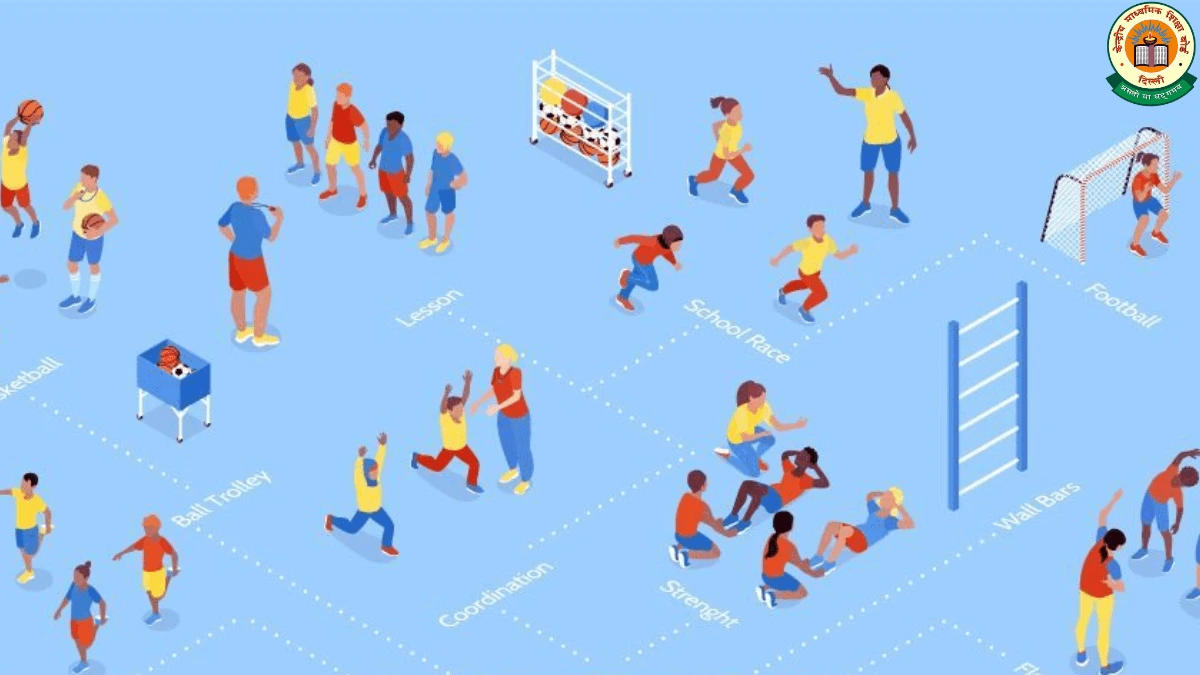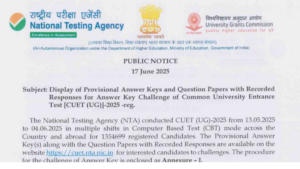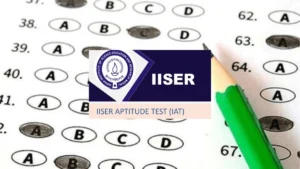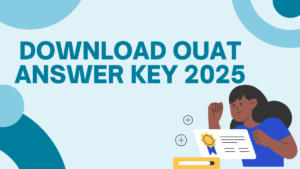Physical Education Class 12 Answer Key 2025: The Central Board of Secondary Education successfully concluded the class 12 Physical Education board exam on February 17, 2025. Students who appeared for the exam can now get the detailed solutions for all the questions asked in board paper. We have shared the CBSE Class 12 Physical Education Answer Key 2025 on this page.
CBSE Class 12 Physical Education Answer Key 2025
Students can use the CBSE Class 12 Physical Education Answer Key 2025 to examine their performance in the board paper. The answer key of physical education board exam is created by our expert faculty after the availability of the official question paper. Students can match their responses using that answer key and predict their exam score. The expert answer key consist of 100% accurate answers for all questions.
Physical Education Answer Key 2025 Class 12 CBSE Set-wise
Our expert team at Add247 delivers answer keys for all the question paper sets. Students can compare the answer keys for all multiple-choice questions in Section A, from Questions 1 to 18, to estimate their scores. Please be aware that the Physical Education answer keys are not official and are made available to assist students in evaluating their performance in the board exam for the year 2024-25. Check set-wise answer key for all question paper sets below.
Every objective-type question in Section A of the Class 12 Physical Education question paper is mandatory. The overall weightage of the physical education theory exam is 70 marks. The exam paper contains 5 sections and a total of 37 questions. The answer keys for the other sections, namely B, C, D, and E, are not included because the scores rely on the student’s writing style.
Answer Key Physical Education Class 12 2025 with Questions
The CBSE releases the class 12 physical education official answer key in May 2025 along with the results. Meanwhile, the experienced teachers provide unofficial answers for all questions to help board students plan their upcoming education journey. Check the correct answers for board exam questions below.
Section A
1. The post-competition responsibility of the technical committee is the maintenance of the field.
2. The objective of Intramural tournaments is to provide opportunities for choosing a career in sports.
3. Scoliosis is NOT a deformity related to lower extremities.
4. Brisk walking, running, bicycling, and jumping are related to endurance activities.
5. As per the prescribed syllabus, Suryabhedan Pranayam is recommended for asthma.
6. The image depicts Chakrasana.
For visually impaired candidates,
the correct pose of Paschimottanasana is forward bending in the sitting position.
8. Both Assertion (A) and Reason (R) are true, but Reason (R) is NOT the correct explanation of Assertion (A).
9. Red, blue, black, and yellow are the colors that represent the four regional confederations in the Deaflympic logo.
10. A first class lever has the load resistance between the fulcrum and the force.
11. The scientific name of Vitamin C is Ascorbic acid.
12. Both Assertion (A) and Reason (R) are true, but Reason (R) is NOT the correct explanation of Assertion (A).
13. In the sit and reach test, the score is recorded to the nearest centimeter between the initial and final score.
14. The correct match of the items in List I with List II is: (a) – iii, (b) – iv, (c) – ii, (d) – i.
15. “The golf ball remains at rest until it is struck by a golf club” statement indicates the law of inertia.
16. The correct match of the items in List I with List II is: (a) – i, (b) – ii, (c) – iii, (d) – iv.
17. The concept of self-esteem generally refers to a person’s evaluation of, or attitude towards, him or herself.
18. The Swedish word speed play is also known as Fartlek training.
19. In Isometric exercises movement can NOT be seen directly.
Section B
Q.1. Suggest any two corrective measures for each, bow legs and round shoulders.
a) Bow Legs
b) Round Shoulders
Ans:
a)
Perform leg strengthening exercises like squats and resistance band workouts.
Use corrective braces or orthopedic footwear to improve alignment.
b)
Do posture correction exercises like wall angels and shoulder retraction.
Stretch chest muscles and strengthen the upper back with rows and reverse flys.
Q.2. Enlist four benefits of participation in physical activities for children with special needs.
Ans:
Improves motor skills like coordination and balance.
Boosts self-esteem by promoting social interaction.
Enhances cognitive development for better learning and focus.
Promotes emotional well-being by reducing stress and anxiety.
Q.3. Enumerate any two myths related to food items with their respective facts.
Ans:
Myth: Eating fat makes you fat.
Fact: Healthy fats (nuts, avocados) are essential for the body.
Myth: Carbs should be avoided for weight loss.
Fact: Complex carbs (whole grains, fruits) provide energy.
Q.4. Mention the fitness index score formula and its norms for the Harvard Step Test.
✅ Formula:
Fitness Index = (Total duration of exercise (in seconds) × 100² × Sum of pulse counts (after 1, 2, and 3 min))
Fitness Index=(2×Sum of pulse counts (after 1, 2, and 3 min) Total duration of exercise (in seconds)×100)
✅ Norms:
Fitness Index Score Category
Above 96 Excellent
83-96 Good
68-82 Average
Below 68 Poor
Q.5. Mention any two strategies for enhancing adherence to exercise.
Ans: Set realistic goals to stay motivated and track progress.
Make exercise enjoyable by choosing fun activities like sports or dance.
Q.6. When wrestlers fall on the mat, why do they spread their arms, knees, and legs?
Ans: Wrestlers spread their arms, knees, and legs to increase the surface area of impact, which helps in reducing force on a single body part. This prevents serious injuries by evenly distributing the shock across the body.
CBSE Class 12 Physical Education Answer Key 2025 PDF Download
The expert made answer key PDF for the CBSE Class 12 physical education exam 2025 has been provided below for free download.
CBSE Class 12 Physical Education Exam Analysis 2025
With the exam completed, subject specialists and educators are currently evaluating the question paper. The exam paper was organized effectively to assess the theoretical understanding and practical application abilities of the students. Students were evaluated on a range of subjects, such as sports nutrition, physiology, biomechanics, and sports psychology.
CBSE Class 12 Physical Education Paper Review 2025
Check the paper review for CBSE Class 12 Physical education exam below based on students reaction and expert teacher review.
Students Reaction: Numerous students have shown relief after finishing the exam and are discussing their thoughts on time management and preparation techniques.
Teachers Review: Educators observed that the exam was fair regarding all the sections. The questions were anticipated to be curriculum-focused, necessitating a solid grasp of theoretical ideas and their real-world applications.
CBSE Class 12 Physical Education Paper Difficulty Level
The difficulty level of the CBSE Class 12 Physical education exam has been shared hereunder.
|
Parameter
|
Physical Education Exam Analysis 2025
|
|
Overall difficulty level of the paper
|
Easy to Moderate
|
|
Difficulty Level of Section A
|
Easy
|
|
Difficulty Level of Section B
|
Moderate
|
|
Difficulty Level of Section C
|
Easy to Moderate
|
|
Difficulty Level of Section D
|
Easy to Moderate
|
|
Difficulty Level of Section E
|
Moderate
|
|
Expected Good Score
|
55+
|
|
Lengthiest Question (If any)
|
Children and Women in Sports, Biomechanics and Sports
|
|
Time-Consuming Section (If any)
|
No
|
How to Use Answer Key of Physical Education Board Exam 2025 Class 12 CBSE
After students obtain the answer key for Class 12 Physical Education, they can estimate their likely scores by following these steps:
- Align your answers – Review your responses against the official answer key.
- Utilize the grading criteria – Assign points for accurate responses according to the grading criteria.
- Subtract marks (if relevant) – As CBSE does not implement negative marking, no marks will be subtracted.
- Determine the overall score – Add together all the correct responses to assess the final score.
CBSE Class 12 Physical Education Marking Scheme 2025
The grading system is a crucial element in assessing performance. Here is the grading scheme for the CBSE Class 12 Physical Education Exam Answer Key 2025:
|
Question Type
|
Number of Questions
|
Marks Per Question
|
Total Marks
|
|
Very Short Answer (VSA)
|
5
|
1
|
5
|
|
Short Answer (SA)
|
8
|
3
|
24
|
|
Long Answer (LA)
|
6
|
5
|
30
|
|
Case-Based Questions
|
2
|
6
|
12
|
|
Total
|
21
|
Varies
|
70
|
Benefits of CBSE Class 12 Physical Education Answer Key 2025
The answer key benefits students in various ways:
- Initial Evaluation: This enables students to evaluate their performance prior to the official outcomes.
- Understanding Mistakes: Learners can recognize flaws and grasp the right solutions.
- Future Exam Readiness: It assists students in enhancing their response techniques for forthcoming tests.
- Enhances Assurance: Understanding the expected score builds confidence and alleviates stress regarding results.
The CBSE Class 12 Physical Education answer key (unofficial) acts as a safety support to students offering them plenty of time to plan their studies according to their achieved marks. It is important to note that 30 marks in the physical education exam is offered through the practical method.











 CUET UG Answer Key 2025 (Provisional) Re...
CUET UG Answer Key 2025 (Provisional) Re...
 IISER Final Answer Key 2025 Out, Downloa...
IISER Final Answer Key 2025 Out, Downloa...
 OUAT Answer Key 2025 OUT @ouat.ac.in, Do...
OUAT Answer Key 2025 OUT @ouat.ac.in, Do...







